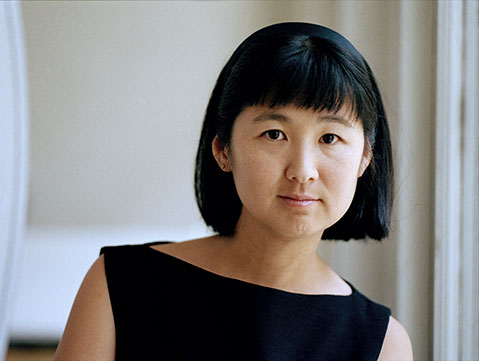Maya Lin Talks Art and Architecture
Vietnam Veterans Memorial Creator Comes to Santa Barbara

In 1981, undergraduate architect student Maya Lin came crashing into the national spotlight when she beat out more than 1,400 entries in a public design contest with her now-famous rendering for the Vietnam Veterans Memorial in Washington, D.C. The piece is something to behold: two long, tapered walls where the names of more than 57,000 American soldiers killed or missing in action are listed chronologically by date of death; the polished black granite surface reflecting the visitor’s own image; and the way the walls cut away from the earth like a wound all work together to invoke powerful and raw emotions.
Lin knew this would be the effect, and despite her design being bathed in controversy — Senator James Webb called it “a nihilistic slab of stone” as soon as the concept was unveiled — Lin refused to waiver from her original concept. Once built, the memorial proved to be wildly popular; in 2015 the number of visitors to the wall was estimated at 5.6 million.
With a high-profile success before her career even began, Lin could easily have gone down in history as a one-hit wonder. Instead, she has created a varied and extensive body of work that includes landscape art, sculpture, and architecture, including the recently completed LEED Gold–rated Novartis Institutes for BioMedical Research in Cambridge, Massachusetts, with its sweeping façade comprising punctuated granite blocks that manage to achieve an ethereal floating quality, as well as “Where the Ocean Meets the Mountains,” an 11-acre, undulating series of grassy waves rising up out of the earth in the Hudson Valley, New York. Lin was the subject of the Oscar-winning documentary Maya Lin: A Strong Clear Vision and received a 2016 Presidential Medal of Freedom from President Barack Obama.
There are common threads visible in every project she takes on, regardless of the medium. For example, she is deeply affected by nature, which translates directly to her work. She also dedicates thought to every detail large and small. “I’m really hands-on,” she said in a recent phone interview with The Santa Barbara Independent. “So if I take on a project, you get me. It’s a little more artisan-stressed that way. I want to focus on everything down to the doorknobs.”
Art and architecture make up two legs of her tripod of work, Lin explained, the third being memorials. In what is possibly her most ambitious effort, What Is Missing? is a global memorial to the planet and has the potential to do the seemingly impossible — outshine her very first memorial. In what Lin described as “a bit of a guerrilla art project,” What Is Missing? is a multi-website, multimedia piece that focuses on bringing awareness to environmental issues such as climate change, habitat degradation, and the loss of biodiversity through temporary and permanent art installations such as the sculpture “The Listening Cone” at the San Francisco Academy of Sciences, taking over the MTV Billboard in Times Square on Earth Day, and including an interactive global online component whatismissing.net. In a continually evolving project that Lin believes she will work on the rest of her years, she envisioned the project “to flow like water, going wherever it’s invited in.”
Lin has always challenged the idea of what a memorial should look like, What Is Missing? is no exception. Using the same mechanism that many people credit for our disconnect from nature — the Internet — Lin is able to tap into a wider audience and help connect the dots across the globe. “I think the key is to not put our heads in the sand now of all places and be afraid of science, because science and technology is our way out of this.” The sobering and alarming facts presented on the website showing what we’ve already lost and stand to lose are balanced by hope and offering solutions and best-case practices to emulate. Lin doesn’t want it to “be all doom and gloom,” she said. “Loss is merely the way to wake us up that something really bad is happening, but this, this is all the stuff that you could be doing.”
The What Is Missing? website offers a wealth of information and makes one think of one’s own role, opening up a dialogue. For example, some engaging numbers I picked up from the site is that the cost estimate for clean water and sanitation for all is a mere $9 billion, contrasted with NFL revenues at $9.3 billion; the cost of basic education for all is $6 billion, whereas Halloween in the U.S. is a $6 billion expenditure. It shows that our money isn’t going to the most important things.
With her incredible ability to make things personal and create a connection, Lin has included a “Map of Memory,” where people can log and share their own personal experiences with climate change, and through this vehicle has collected thousands of stories. The architect in her has also included a “Green Print” section, which reimagines plausible future scenarios. A fun fact that she shared: If the entire population of the world, all seven billion, lived at the same density as Manhattan, we could all fit into the State of Colorado!
Her last memorial seems a fitting union of her background in memorials and her deep commitment for the environment.
4·1·1
UCSB Arts & Lectures Series presents an evening with Maya Lin on Monday, January 30, 7:30 p.m., at UCSB’s Campbell Hall. Call (805) 893-3535 or see https://artsandlectures.sa.ucsb.edu



